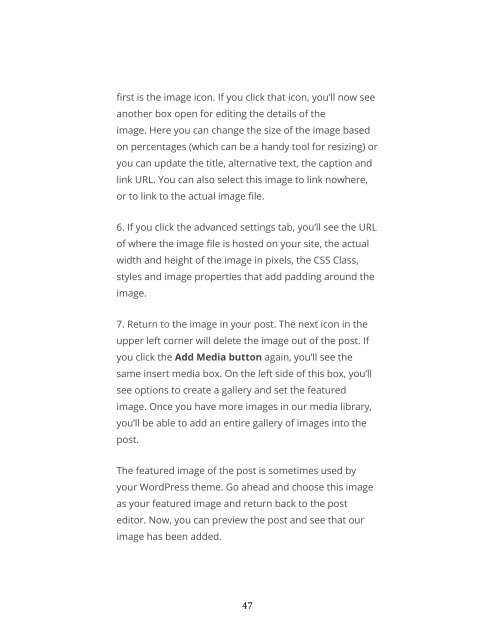You also want an ePaper? Increase the reach of your titles
YUMPU automatically turns print PDFs into web optimized ePapers that Google loves.
first is the image icon. If you click that icon, you’ll now see<br />
another box open for editing the details of the<br />
image. Here you can change the size of the image based<br />
on percentages (which can be a handy tool for resizing) or<br />
you can update the title, alternative text, the caption and<br />
link URL. You can also select this image to link nowhere,<br />
or to link to the actual image file.<br />
6. If you click the advanced settings tab, you’ll see the URL<br />
of where the image file is hosted on your site, the actual<br />
width and height of the image in pixels, the CSS Class,<br />
styles and image properties that add padding around the<br />
image.<br />
7. Return to the image in your post. The next icon in the<br />
upper left corner will delete the image out of the post. If<br />
you click the Add Media button again, you’ll see the<br />
same insert media box. On the left side of this box, you’ll<br />
see options to create a gallery and set the featured<br />
image. Once you have more images in our media library,<br />
you’ll be able to add an entire gallery of images into the<br />
post.<br />
The featured image of the post is sometimes used by<br />
your <strong>WordPress</strong> theme. Go ahead and choose this image<br />
as your featured image and return back to the post<br />
editor. Now, you can preview the post and see that our<br />
image has been added.<br />
47


